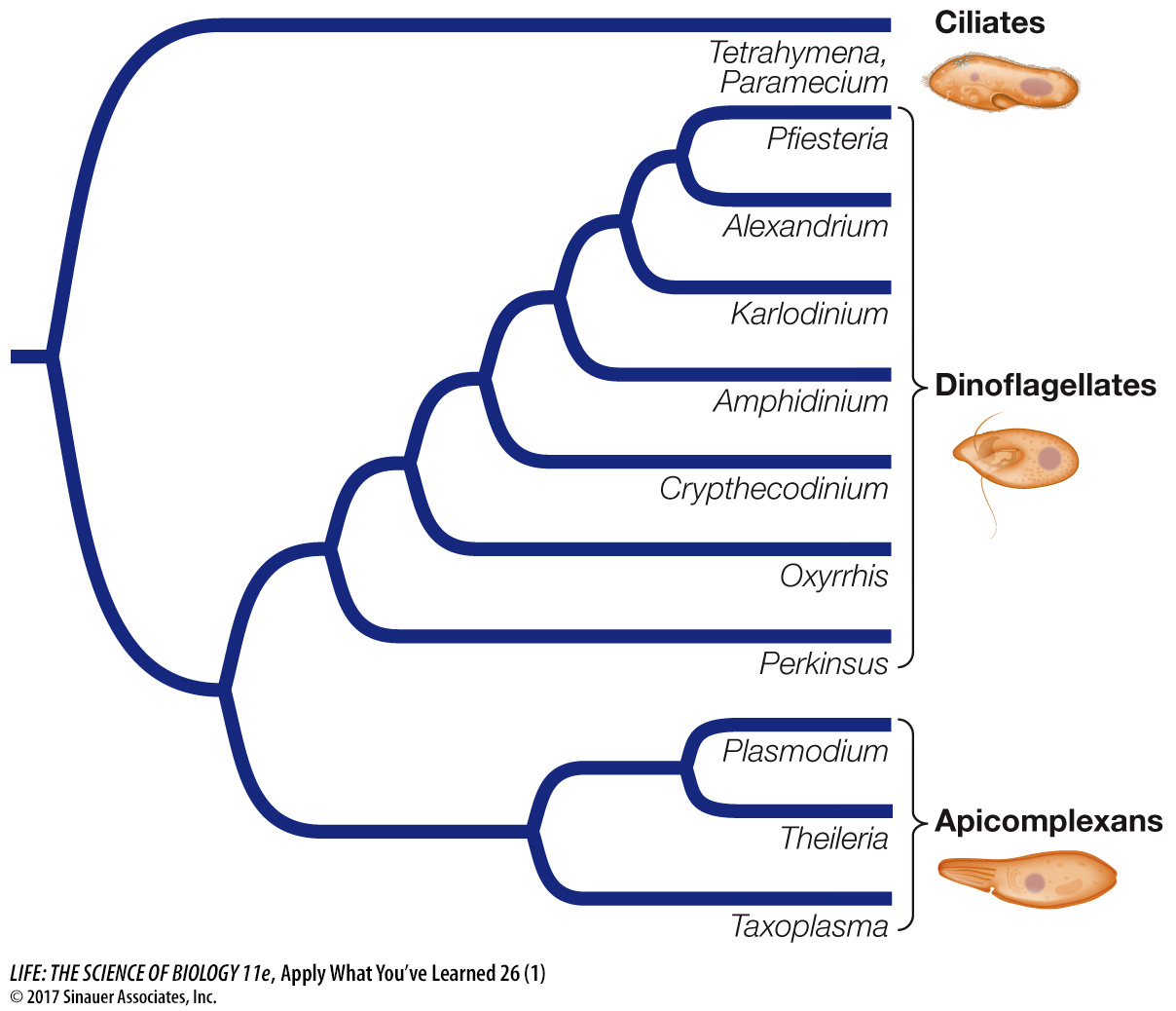Apply What You’ve Learned
Review
26.2
Ciliates are named for their numerous hair-
26.2
Apicomplexans possess an apical complex.
Because closely related organisms are more likely to share characteristics than are more distantly related ones, biologists can use phylogenetic information to make predictions about organisms based on what is known about their relatives. This exercise examines such use of phylogenies in the alveolates. Below is a phylogenetic tree for some of the alveolates, along with a table listing some of the characteristics for selected species.

| Species | Features |
|---|---|
| Theileria parva | Parasite of cattle, transmitted by ticks |
| Perkinsus marinus | Parasite of oysters; marine habitat |
| Crypthecodinium cohnii | Used to manufacture omega- |
| Oxyrrhis marina | Omnivorous grazer; produces red tides |
| Pfiesteria shumwayae | Can be predatory on fish; can use chloroplasts of ingested green algae for photosynthesis |
Questions
1.
Based on this information and what you learned in the text, what life-
All of the apicomplexans shown here have a parasitic lifestyle. Therefore this lifestyle was likely present in the common ancestor of the apicomplexans. The hosts of the three apicomplexans differ, but they are all mammals. Thus it is reasonable to infer that the common ancestor of these species likely had a mammalian host.
2.
Suppose a researcher examining the apicomplexans was considering which dinoflagellates to sample as an outgroup. Based on the phylogeny, is there a reason to favor choosing one particular genus of dinoflagellates over the others? If so, which genus? Explain your answer.
No, all of the dinoflagellates are equally distantly related to the apicomplexans, so there is no reason to favor one genus over another in choosing an outgroup.
3.
Suppose a researcher was studying the feeding mode of the genus Pfiesteria and wanted to determine if particular features evolved within this genus or were present in the ancestor of Pfiesteria. Based on the phylogeny, is there a reason to target sampling to a particular genus of dinoflagellate (outside Pfiesteria) over the others? If so, which genus? Explain your answer.
The genus Alexandrium is more closely related to Pfiesteria than to any of the other genera, so this genus is a good choice for comparison, as the two genera share the most recent common ancestor. Therefore comparing Alexandrium to Pfiesteria would help the investigator determine which attributes evolved in Pfiesteria, and which were already present in the common ancestor of Alexandrium and Pfiesteria.
4.
The red tides produced by Oxyrrhis and other dinoflagellates are not produced by apicomplexans. Similar red tides are produced by diatoms, which are distantly related to alveolates. Thus the production of red tides is convergent in these two groups. Describe another example from the text of convergent evolution in protists but outside alveolates.
Answers will vary. One example is the morphological similarity of loboseans and heteroloboseans, despite these groups not being closely related.